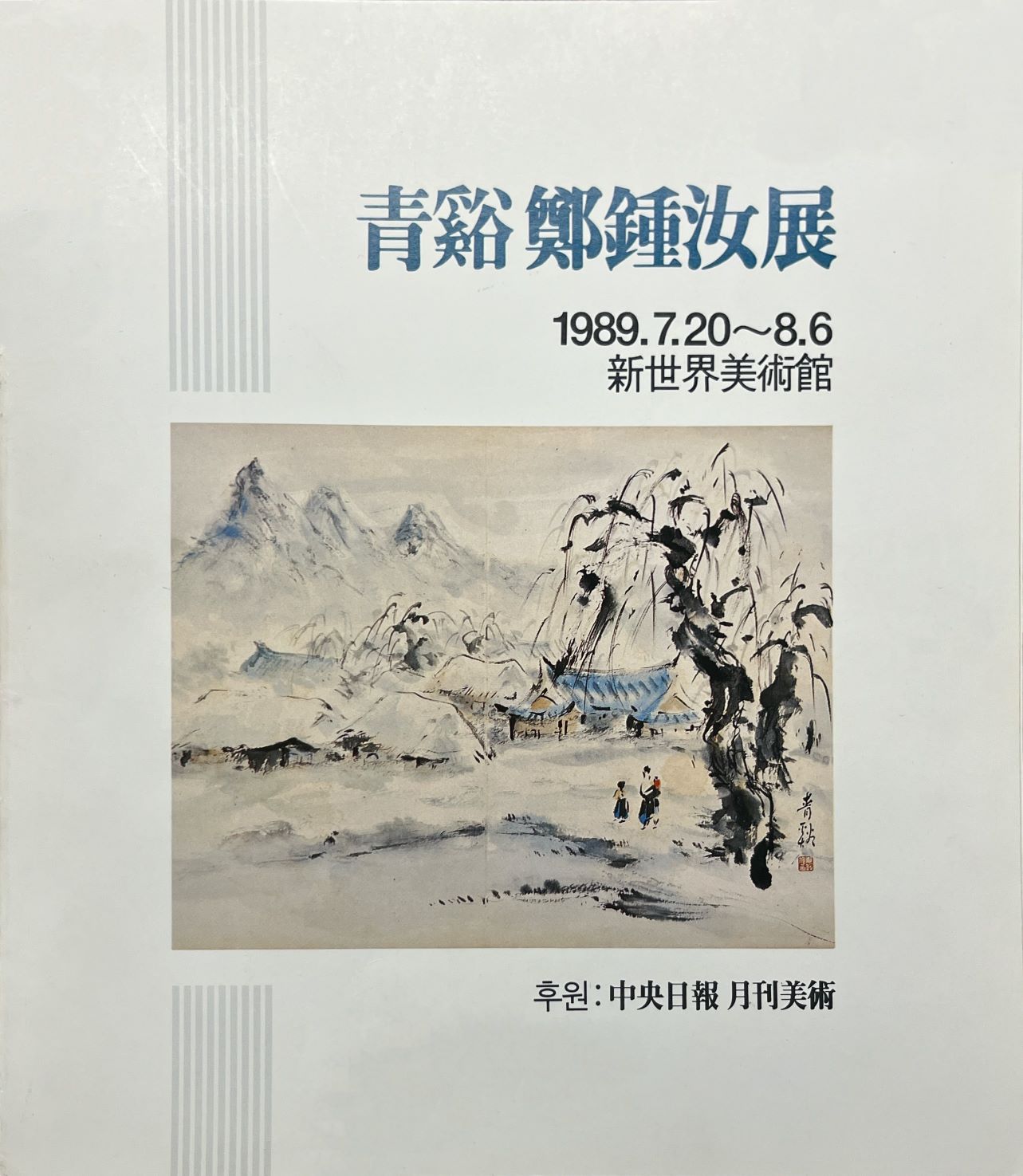
Cheonggye Chung Chong-yuoBrochure, 1989, MMCA Art Research Center Collection
Cheonggye Chung Chong-yuo Exhibition
* Source: MMCA
Related
-
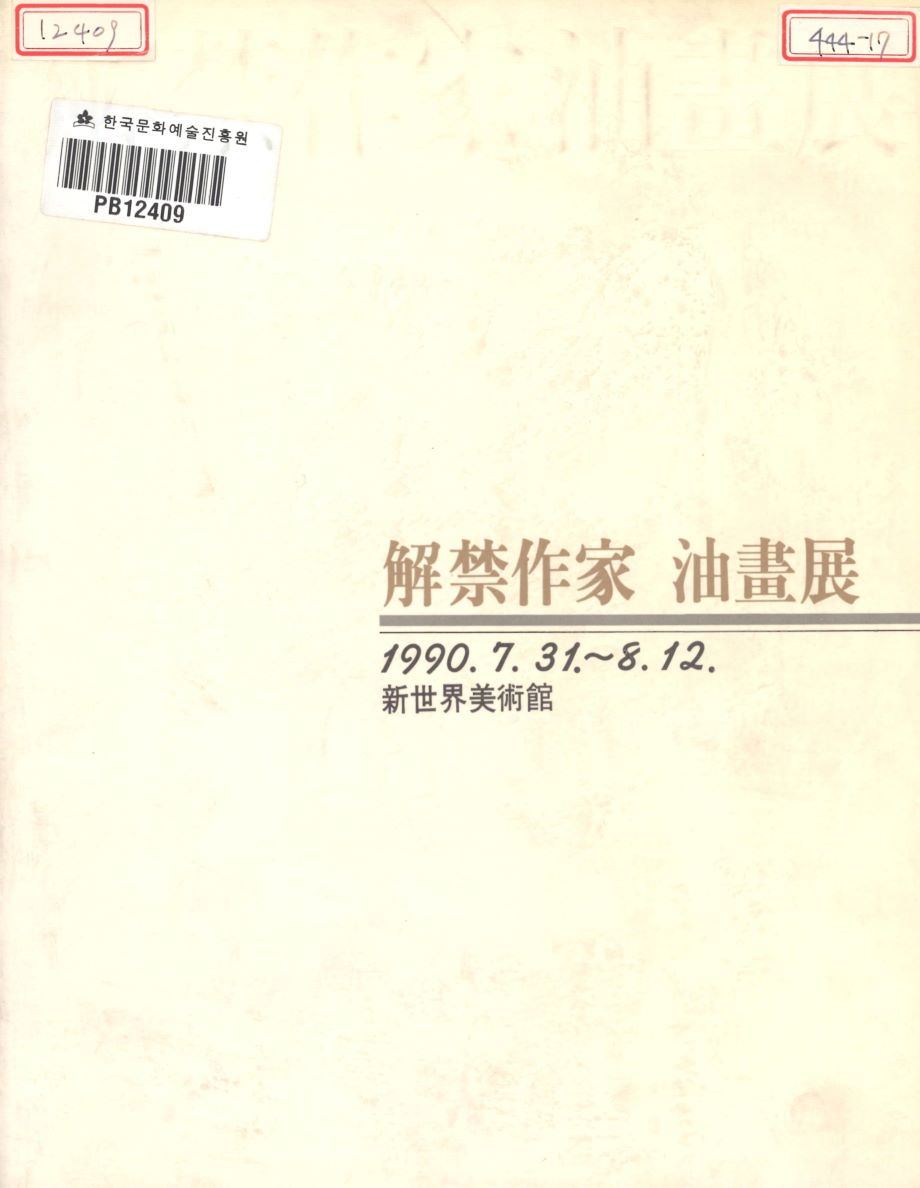
Artists who defected to North Korea
Artists who defected to North Korea refer to artists who moved their spaces of artistic activities to north of the armistice line during the period immediately after Korea’s liberation from Japan on August 15, 1945 until the signing of the truce agreement. Prior to the lifting of the bans on artists who were abducted by or defected to North Korea in 1988, they were labeled traitors for “betraying the South Korean system and choosing the North Korean one” or “choosing communism.” Their works were deemed “detrimental to ideas,” so it was forbidden to mention them. However, contrary to the reasons for restrictions imposed by the government, recent studies have revealed that the defection of most artists to North Korea resulted not from ideological choices or alignment with political system of North Korea, but from unavoidable circumstances caused by the war and division of the country. Accordingly, the scope of research on artists who defected to North Korea can vary depending on researchers or research environments. It discusses the conflict and movement between the two spaces of Seoul and Pyongyang or South and North Korea and further includes those that the South Korean government defined as artists who chose the North Korean system. The number of artists who defected to North Korea amounts to roughly sixty to eighty. In recent years, there has been a view that the so-called consecutive lifting, which differentiates and selectively relieves artists who defected to North Korea voluntarily, those abducted to North Korea, those residing in North Korea, and those who returned to North Korea after defection to South Korea, is an act of high-level public security control. This is seen as a non-academic power tyranny and violence against intelligence that insults the particularity of art, leading to voices to dismantle and prospectively reconstruct the existing frame of the lifting of bans on abducted artists and artists who defected to North Korea.
-
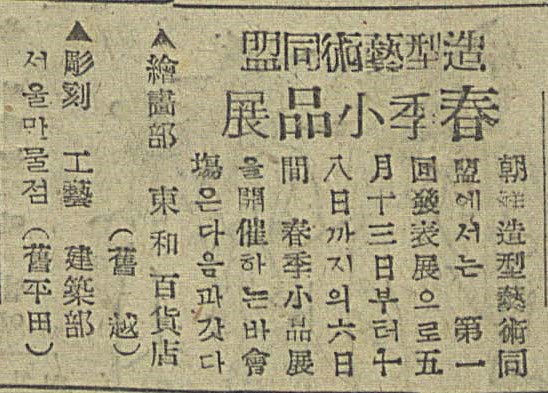
Korean Plastic Arts Federation
An organization formed in 1946 by numerous established artists. The core membership included Jeong Hyeonung, Gil Jinseop, Kim Kichang, Kim Man-hyeong, Lee Qoede, and Yoon Hee-soon, who left the Korean Art Association (Joseon misul hyeophoe) because of their opposition to the right-wing beliefs of Ko Huidong. The association was the parent organization of the Independent Art Association, Dangu Art Academy, Cheongahoe, Joseon Sculptors Association, and Korean Craftspersons Association (Joseon gongyega hyeophoe). The alliance held exhibitions and published bulletins, but about eight months after its establishment, it merged with the Korean Artist Federation (Joseon misulga dongmaeng) to form the Korean Art Alliance (Joseon misul dongmaeng). The Korean Plastic Arts Federation (Joseon johyeong yesul dongmaeng) was a rare politically moderate organization that accepted many artists in a national art community that was sharply divided along right-wing and left-wing divisions.
-

Korean Art Alliance
An organization created in 1946 in North Korea. as the result of a merger between the socialist Korean Artist Federation (Joseon misulga dongmaeng), the politically moderate Korean Plastic Arts Federation (Joseon johyeong yesul dongmaeng), the Joseon Sculpture Association, and former members of the Korean Art Association (Joseon misul hyeophoe). Together, these associations collaborated to host an Independence Cultural Art Exhibition and founded the Korean Art Alliance (Joseon misul dongmaeng). The Alliance actively conducted enlightenment activities under the doctrine of “Art for Public Awareness” and leftist artists were the primary members. The leadership of the Alliance was comprised of Yoon Hee-soon, Lee Insung, Oh Chiho, and Gil Jinseop. The Alliance’s doctrines included the implementation of democracy, departure from the influences of imperialism, establishment of National Art, and the enlightenment of the populace. The Alliance engaged in raising public awareness about modern art through activities such as street exhibitions, touring exhibitions, and the production of posters and leaflets. The Korean Art Alliance (Joseon misul dongmaeng) was an influential faction within the art community of the 1940s, raising public awareness about art and issuing statements on political events before disbanding in 1948.
Find More
-
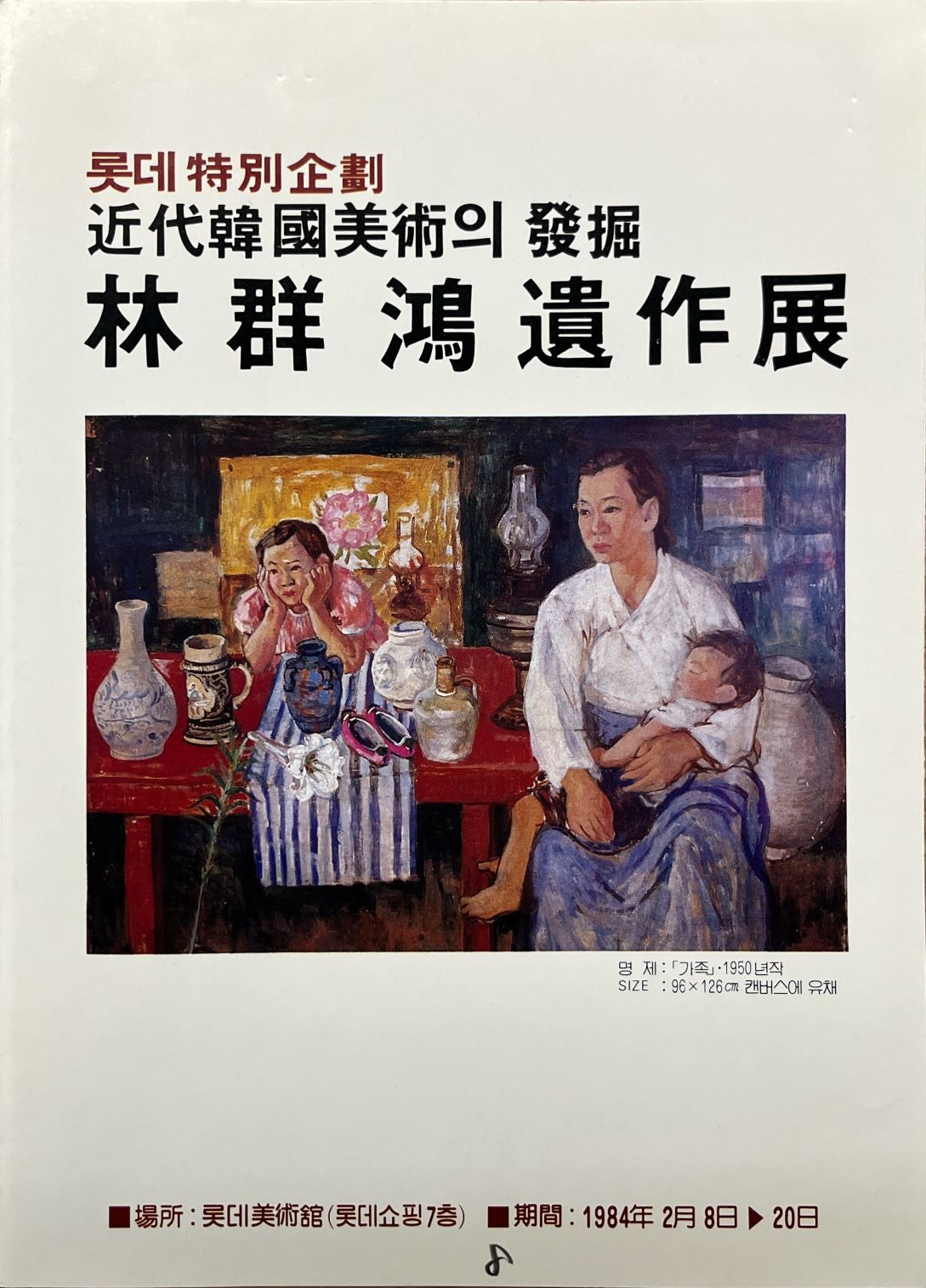
Lim Gunhong: The Forgotten Painter
Lim Gunhong: The Forgotten Painter was an invitational exhibition held at the Lotte Museum of Art from February 8 to 20 in 1984. Lim’s exhibition is the only one devoted to artists who defected to North Korea before the Korean government’s decision in July 1988 to officially release the pre-liberation works by artists who defected to North Korea. In 1931, Lim made his debut as a painter by receiving an honorable mention for Spring Sketch at the Tenth Joseon Art Exhibition [Joseon misul jeollamhoe] under his real name Lim Suryong and for Face at the Second Nokhyanghoe Association Exhibition. He founded the Nokgwahoe Association in 1936 and continued to hold exhibitions until 1938. In 1939, he operated the Yerim Studio (design studio) along with Eom Doman. Later, he traveled to Beijing, China, and produced a vast body of works depicting Chinese landscapes. After Korea’s liberation from Japan, he was active in the Korean Plastic Arts Federation [Joseon johyeong yesul dongmaeng] formed in 1946 and the Korean Art and Culture Association [Joseon misul munhwa hyeophoe] founded in 1947. Lim worked at the Seoul National Art Studio during the Korean War and is believed to have defected to North Korea after the restoration of Seoul on September 28, 1950. He served as a propagandist for the Eastern Front Art and Performance Corps of the Ministry of Culture and Propaganda in North Korea. Later, Lim became the head of the Kaesong branch of the Korean Artist Federation [Joseon misulga dongmaeng]. In 1962 he moved to Hamgyeongbuk-do Province to continue his creative pursuits. The exhibition Lim Gunhong: The Forgotten Painter was made possible thanks to the efforts of art critic Yun Beommo. In 1983, Yun discovered the remaining works of Lim and learned that Lim was not a defector to North Korea but was abducted and disappeared shortly after the Korean War. The exhibition featured forty oil paintings by Lim Gunhong, including Seated Woman, which earned an honorable mention at the Fifteenth Joseon Art Exhibition (1936), and Nude and Model, both of which were part of his son’s collection. The exhibition catalogue, titled the same, was also published. This catalogue features sixty oil paintings and ten sketches that successfully showcase the work of Lim Gunhong, an artist who had been forgotten in the history of modern Korean art. His oeuvre was built through self-study during the colonial era.
-
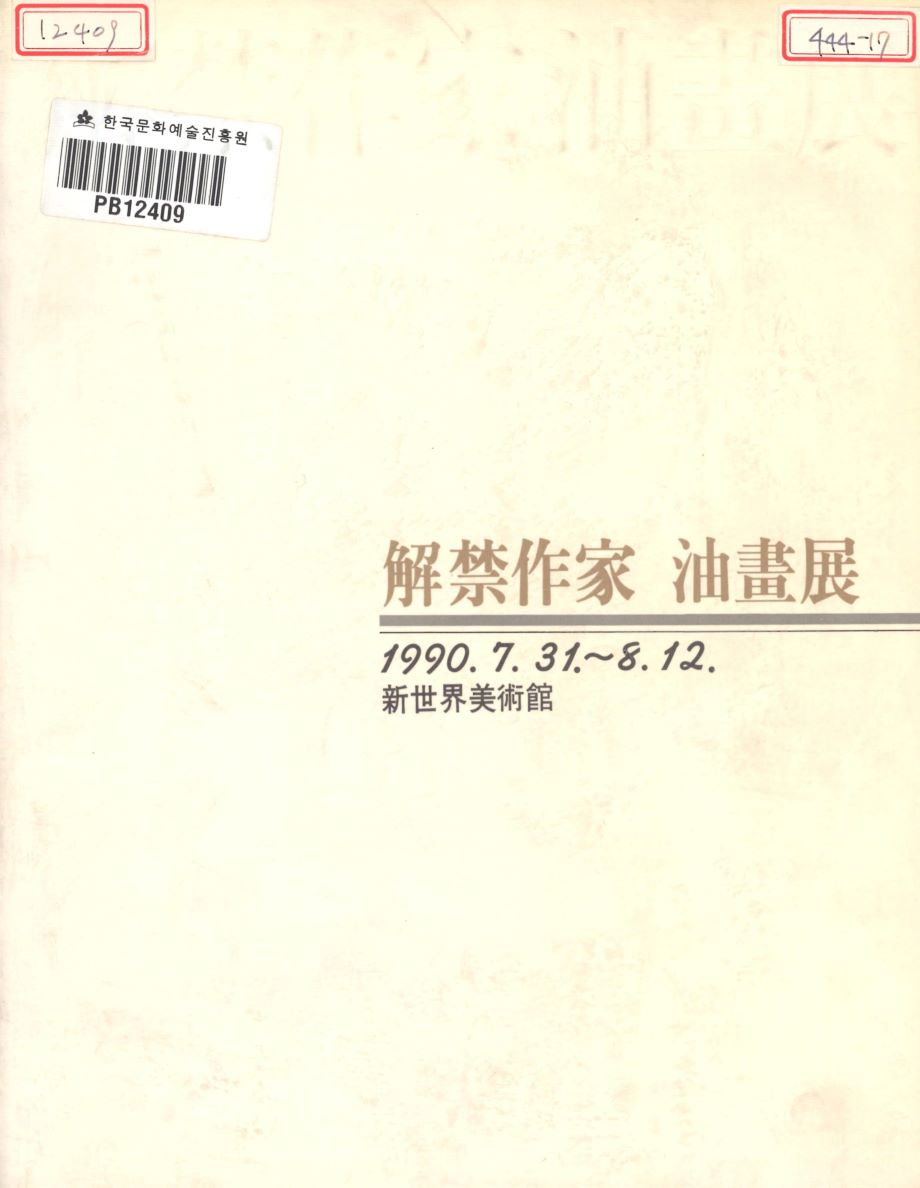
Oil Paintings of Unbanned Artists
Oil Paintings of Unbanned Artists was an exhibition held from July 31 through August 12 in 1990 at Shinsegae Gallery. It introduced to the general public works by ten artists, who defected to North Korea, for the first time in forty years. They included Pai Unsoung, Kim Jukyung, Kim Youngjun, Gil Jinseop, Jeong Hyeonung, Lee Qoede, Lim Gunhong, Choi Jaiduck, Kim Man-hyeong, and Jeong Onnyeo. In October 1988, the South Korean government lifted the ban on artists who were abducted and defected to North Korea. Ji Myeongmun, then director of Shinsegae Gallery, stated that “this exhibition was organized in the hope that those artists who were abducted and defected to North Korea would be given their due art historical recognition after forty years of taboo.” At this exhibition, forty works produced before 1950 were on display, such as Chongseokjeong Pavilion on Haegeumgang River by Pai Unsoung, Self-portrait and Dahlias and Zinnia by Kim Youngjun, Landscape Against Mt. Bukak and Early Autumn by Kim Jukyung, Wonju Landscape by Gil Jinseop, Family and Bird by Lim Gunhong, Fishbowl by Choi Jaiduck, and Lady by Lee Qoede. The exhibition also presented ten works in the collections of bereaved families and relatives of artists who were abducted or defected to North Korea, which were scattered throughout the country, including thirty works in private collections, a work in the collection of the National Museum of Modern and Contemporary Art, Korea, and some works in the collection of the Tokyo University of the Arts Museum.






